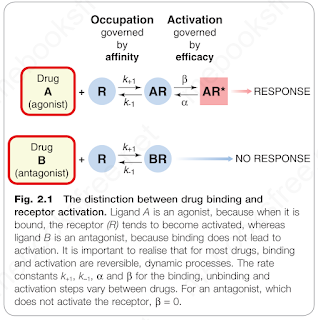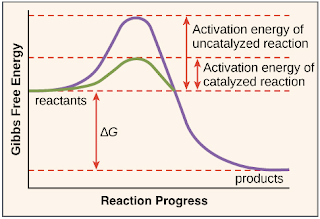How Drugs Act?
Introduction
A drug can be defined as a chemical substance of known structure, other than a nutrient or an essential dietary ingredient, which, when administered to a living organism, produces a biological effect.
- 4 main kinds of regulatory protein are commonly involved as primary drug targets, namely: receptors, enzymes, ion channels and carrier molecules (transporters).
For a drug to be useful as either a therapeutic or a scientific tool, it must act selectively on particular cells and tissues (i.e. high degree of binding site specificity).
- However, no drugs are completely specific in their actions. In many cases, increasing the dose of a drug will cause it to affect targets other than the principal one, and this can lead to side effects.
NOTE: Many drugs bind (in addition to their primary targets) to plasma proteins and other tissue proteins, without producing any obvious physiological effect.
Drug Receptors
In pharmacology, receptor describes protein molecules whose function is to recognise and respond to endogenous chemical signals.
- Occupation of a receptor by a drug molecule may or may not result in activation of the receptor (i.e. agonist and antagonist respectively).
- For example, beta-blockers block the beta-adrenergic receptors in the heart, leading to a slower heart rate and lower blood pressure.
- Partial agonists are drugs with intermediate levels of efficacy (i.e. even when 100% of the receptors are occupied, the tissue response is sub-maximal).
On the other hand, allosteric modulators bind to sites on the receptor other than the agonist binding site and can modify agonist activity.
- Cinacalcet is considered a positive allosteric modulator of the calcium-sensing receptor (CaSR), used to treat hyperparathyroidism.
Enzymes
Enzymes are proteins molecules (except for a few classes of catalytic RNA molecules) which catalysts (speeds up) a chemical reaction by lowering the activation energy.
- The role of enzymes is to accelerate the interconversion of substrates and products, hence the equilibrium of a reaction is unaffected by the enzyme.
- A reaction is at equilibrium when there is no net change in the concentrations of reactants or products.
Many drugs target enzymes.
- Often, the drug molecule is a substrate analogue that acts as a competitive inhibitor of the enzyme.
- In other cases, the binding is irreversible and non-competitive.
- Drugs may also act as false substrates, where the drug molecule undergoes chemical transformation to form an abnormal product that subverts the normal metabolic pathway.
- There are also pro-drugs which require enzymatic degradation to convert them from an inactive form to an active form.
- Clavulanic acid binds and inhibits beta-lactamases that inactivate amoxicillin resulting in amoxicillin having an expanded spectrum of activity.
- Statins competitively inhibit 3-hydroxy-3-methylglutaryl coenzyme A (HMG CoA) reductase, an enzyme involved in cholesterol synthesis, especially in the liver.
Ion Channels
Ion channels are essentially gateways in cell membranes that selectively allow the passage of particular ions, and that are induced to open or close by a variety of mechanisms.
- Ligand-gated channels
- Open only when one or more agonist molecules are bound
- Voltage-gated channels
- Depending on changes in transmembrane potential
In general, drugs can affect ion channel function in several ways.
- Binding to the channel protein itself, either to the ligand-binding site or other (allosteric) sites, thus increase or decrease opening probability.
- Plugs the channel physically, thus blocking ion permeation.
- By an indirect interaction, involving an activated G protein subunit or other intermediary.
- Altering the level of expression of ion channels on the cell surface.
Carrier Molecules (Transporters)
The movement of ions and small polar organic molecules across cell membranes generally occurs either through channels, or through the agency of a transport protein (including active transport), because the permeating molecules are often insufficiently lipid-soluble to penetrate lipid membranes on their own.
- Examples of drugs include selective serotonin reuptake inhibitors (SSRI) such as escitalopram, fluoxetine and sertraline.


Comments
Post a Comment